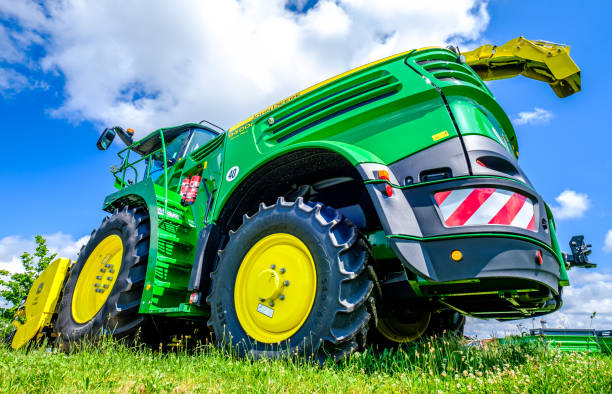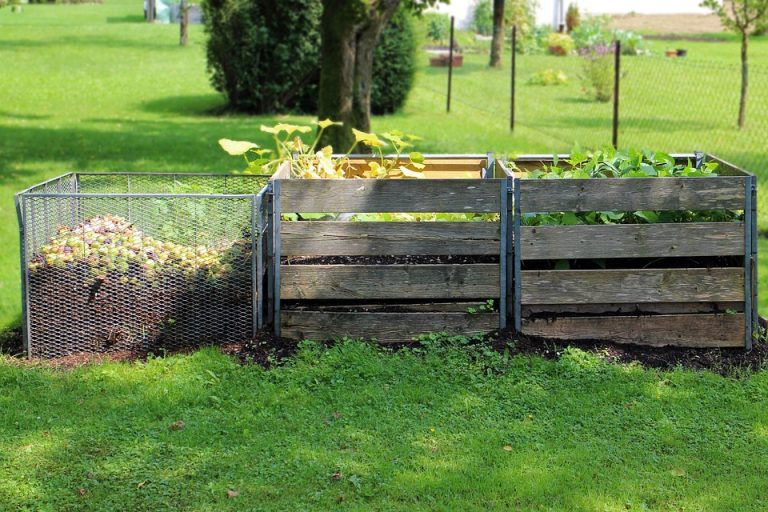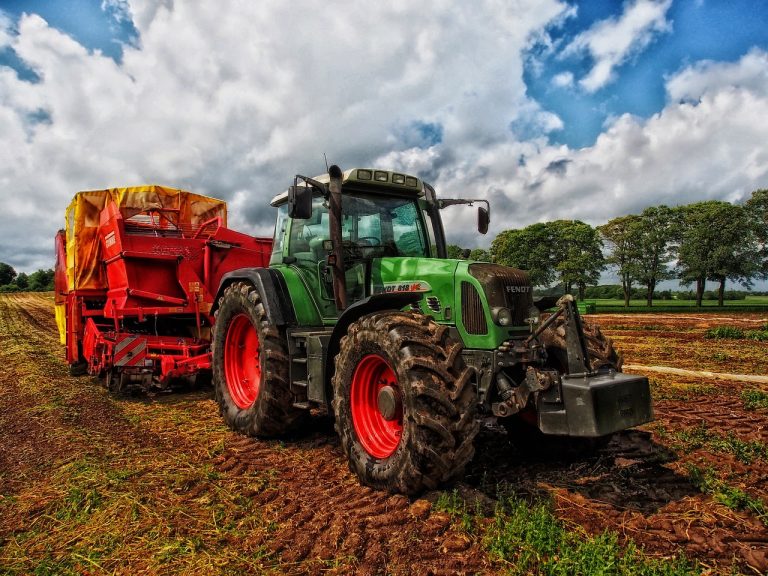JOHN DEERE 1025R PROBLEMS (8 Hidden Problems)
“Unraveling the Enigma: John Deere 1025R Problems Unmasked! Dive into the heart of mechanized mysteries as we expose the lesser-known challenges haunting the beloved John Deere 1025R.
From quizzical quirks to battle-tested solutions, we embark on an adventure that unveils the untold stories behind this iconic workhorse. Whether you’re a seasoned farmer, an avid gardener, or a curious enthusiast, join us as we dig deep into the mud to unearth the fascinating truths behind the legend that is John Deere 1025R!”

JOHN DEERE 1025R PROBLEMS
The John Deere 1025R, a popular compact utility tractor, is not without its share of challenges. While renowned for its versatility and reliability, some users have reported certain issues that warrant attention.
Common problems include occasional hydraulic leaks, issues with the transmission or gear shifting, and occasional electrical glitches. Additionally, there have been reports of excessive noise from the engine or drivetrain.
However, it’s important to note that John Deere continuously addresses and improves these concerns through dedicated customer support and ongoing research and development.
Despite these challenges, the 1025R remains a formidable workhorse, cherished by many for its performance and capabilities in various agricultural and landscaping tasks.
TECHNICAL SPECIFICATIONS OF JOHN DEERE 1025R
Technical specifications of the John Deere 1025R would be quite extensive and repetitive. Instead, I’ll provide a comprehensive yet concise overview of the technical specifications in a structured format. This will make it easier to read and understand. If you have any specific questions or need more detailed information on certain aspects, feel free to ask.
The John Deere 1025R is a popular compact utility tractor known for its versatility and performance in various applications. It is equipped with a reliable Yanmar 3TNV80F 3-cylinder, liquid-cooled diesel engine with a displacement of 1.3 liters (80 cubic inches). The engine delivers a gross horsepower of 23.9 at 3200 rpm and a power take-off (PTO) horsepower of 18.3. With a fuel capacity of approximately 6.6 gallons (25 liters) and running on diesel fuel, the 1025R is designed to provide efficient power for extended periods.
Its transmission features a hydrostatic transmission (HST) with 2 ranges (Hi/Lo), enabling smooth and easy speed control. The maximum forward speed is 9.6 mph (15.4 km/h), while the maximum reverse speed is 5.1 mph (8.2 km/h). The hydrostatic transmission allows for precise control, making it ideal for intricate tasks and maneuvering.
The tractor’s Power Take-Off (PTO) system includes both rear and mid PTOs, which operate independently and engage via an electro-hydraulic mechanism. The rear PTO speed is 540 rpm, while the mid PTO speed is 2000 rpm, providing flexibility for various implements and attachments.
For hydraulic operations, the John Deere 1025R is equipped with an open-center hydraulic system with a total capacity of 3.3 gallons (12.5 liters). The system’s implement pump flow reaches 5.3 gpm (20.1 l/min), while the steering and services pump flow reaches 3.6 gpm (13.6 l/min). This hydraulic setup allows for efficient operation of front-end loaders, backhoes, and other hydraulic attachments.
The tractor’s three-point hitch is classified as Category 1 and boasts a lift capacity of 681 lbs (309 kg) at 24 inches behind the link arms. The hitch features position control, utilizing draft sensing and top link sensing to maintain consistent implement height and ground engagement.
In terms of physical dimensions, the John Deere 1025R has an overall length of 110.6 inches (281 cm) and a width of 54.1 inches (137 cm) with R4 industrial tires. With the Rollover Protective Structure (ROPS) in an upright position, the height measures 82.2 inches (208.8 cm). The tractor’s wheelbase is 57.1 inches (145 cm), providing stability and maneuverability. The ground clearance stands at 7.5 inches (19 cm), ensuring it can navigate various terrains.
The operating weight of the 1025R, with R4 tires and ROPS, is approximately 1,430 lbs (649 kg). This weight allows for a sturdy and balanced platform for various attachments and implements while maintaining ease of transport and storage.
The tractor comes standard with 18×8.5-10 R4 industrial tires on the front and 26×12-12 R4 industrial tires on the rear. These tires provide excellent traction and stability for the tractor in various conditions, making it suitable for both turf and agricultural tasks.
The John Deere 1025R features a 12V electrical system with a battery capacity of CCA 500A, ensuring reliable starts in cold weather conditions.
Additional features include a Folding Rollover Protective Structure (ROPS) for operator safety, cruise control for effortless operation during long tasks, a differential lock for improved traction in challenging terrain, and a tilt steering wheel for operator comfort.
The tractor also comes with a deluxe seat featuring armrests, offering a comfortable working environment for the operator during extended hours of operation. Optionally, the 1025R can be equipped with the iMatch Quick-Hitch system for convenient attachment changes.
COMMON PROBLEMS AND ISSUES WITH JOHN DEERE 1025R
Common problems and issues that owners may encounter with the John Deere 1025R compact utility tractor.
The John Deere 1025R, while a reliable and popular tractor, may experience some common problems and issues during its operation. These issues can vary in severity and impact the tractor’s performance, functionality, and overall user experience. It’s essential for owners to be aware of these potential problems and take appropriate measures to address them promptly.
TRANSMISSION AND GEARBOX ISSUES:
Some users have reported problems with the tractor’s transmission and gearbox. These issues may manifest as difficulty in shifting gears, transmission slipping or not engaging correctly, and hydraulic fluid leakage. Possible causes include low or contaminated hydraulic fluid, worn or damaged transmission components, improper transmission linkage adjustment, or a malfunctioning transmission control module. Proper maintenance, regular fluid checks, and addressing any detected problems promptly can help mitigate these issues.
ELECTRICAL PROBLEMS:
Electrical issues can cause various malfunctions in the tractor. Common problems include weak or dead batteries, corroded battery terminals, faulty wiring or connections, and blown fuses or relays. Electrical system malfunctions can result in starting problems, lighting issues, and other electrical component failures. Regularly checking the battery, maintaining clean connections, and inspecting the wiring for damage can help prevent or resolve these problems.
ENGINE TROUBLES:
The tractor’s engine may experience problems such as difficulty starting, loss of power or engine performance, and potential overheating concerns. Common causes can include clogged air or fuel filters, fuel quality issues, malfunctioning sensors (e.g., crankshaft position sensor), or compression and timing problems. Regular maintenance, using quality fuel and filters, and proper engine care are crucial in preventing and diagnosing engine-related issues.
STEERING AND SUSPENSION:
Steering and suspension problems can impact the tractor’s maneuverability and stability. Issues may arise due to low or leaking hydraulic fluid in the steering system, damaged or worn steering components, or misaligned suspension linkage. Regularly checking and maintaining the hydraulic system, inspecting steering components, and ensuring proper alignment can help address these concerns.
PTO AND ATTACHMENT PROBLEMS:
Users may encounter problems with the Power Take-Off (PTO) system and various attachments. Issues can include a malfunctioning PTO clutch, problems with attaching and using implements, or issues stemming from the hydraulic system affecting PTO operation. Ensuring the PTO clutch functions correctly, using compatible and well-maintained attachments, and checking the hydraulic system are essential steps to avoid and resolve these problems.
SAFETY AND OPERATOR-RELATED CONCERNS:
Some problems may arise due to improper tractor or attachment usage, operator errors in handling controls and safety features, or issues with the Rollover Protective Structure (ROPS). Operator training on proper tractor operation and safety features is essential to minimize errors and prevent accidents. Regularly inspecting the ROPS for any signs of damage and ensuring it is correctly installed according to the manufacturer’s guidelines is crucial in maintaining operator safety.
While the John Deere 1025R is a reliable and well-designed tractor, encountering occasional problems and issues is not uncommon. Regular maintenance, timely diagnostics, and addressing identified concerns promptly can help maintain the tractor’s performance, reliability, and safety. For more complex issues or those beyond the operator’s expertise, seeking assistance from a qualified John Deere technician or authorized service center is advisable to ensure proper troubleshooting and resolution.
POSSIBLE CAUSES AND DIAGNOSTIC PROCEDURES
When encountering issues with the John Deere 1025R, understanding the potential causes and following a systematic diagnostic approach can be crucial in identifying and resolving the problem effectively. For transmission and gearbox issues, gear shifting difficulties may be attributed to worn linkage or low transmission fluid levels, requiring inspections and fluid checks. Similarly, transmission slipping or failure to engage properly could indicate a damaged clutch or internal component, necessitating a detailed examination.
In electrical problems, issues with the battery could arise from low charge or loose connections, necessitating battery testing and securement checks. Problems with lights and indicators may involve faulty bulbs, wiring, or switches, necessitating circuit testing and component replacement. Engine troubles such as starting problems might be linked to fuel system issues or battery-related concerns, warranting fuel and electrical system inspections. Loss of power or engine performance may
point to clogged filters, air intake problems, or fuel quality concerns, requiring filter replacements and fuel analysis. Overheating concerns may be the result of coolant leaks, thermostat malfunction, or radiator blockages, necessitating cooling system checks. In steering and suspension issues, steering system malfunctions might indicate problems with the steering linkage or power steering pump, necessitating component inspection and fluid level assessments.
Front-end loader problems may stem from damaged hoses or cylinders, necessitating visual inspections and hydraulic system checks. Uneven tire wear and suspension issues may call for tire pressure and alignment inspections. For PTO and attachment problems, failure to engage or disengage the PTO may be linked to electrical or hydraulic system faults, necessitating testing and repairs. Attachment connection issues may be resolved through visual inspections and proper attachment procedures. Implement compatibility problems might be attributed to
incorrect mounting, necessitating examination of the tractor’s compatibility with the implement. To address safety and operator-related concerns, checking seat and seatbelt conditions, ensuring the proper installation of the Rollover Protective Structure (ROPS), and providing operator training on safety protocols are essential. Following these diagnostic procedures allows for a methodical approach in troubleshooting and resolving potential issues, ensuring optimal performance and safety of the John Deere 1025R tractor.
PREVENTIVE MAINTENANCE AND CARE TIPS FOR THE JOHN DEERE 1025R
Proper and regular maintenance is essential to keep the John Deere 1025R operating at its best and to extend its lifespan. By following preventive maintenance and care tips, owners can ensure that their tractor remains reliable, efficient, and safe for years to come.
REGULAR SERVICING SCHEDULE:
Adhering to a regular servicing schedule is one of the fundamental aspects of preventive maintenance. Refer to the tractor’s owner’s manual or consult with a John Deere dealer to determine the recommended service intervals based on hours of operation or calendar time. Regular servicing includes oil changes, filter replacements, lubrication of key components, and overall inspections.
ENGINE MAINTENANCE:
The engine is the heart of the tractor, and proper maintenance is crucial for optimal performance. Regularly check the engine oil level and condition, and change the oil and oil filter at recommended intervals. Inspect the air filter and clean or replace it as needed to ensure proper air intake and engine combustion. Also, monitor the coolant level and condition to prevent overheating issues.
FUEL SYSTEM CARE:
Diesel fuel quality is vital to the engine’s performance. Always use clean and high-quality diesel fuel to avoid clogging the fuel system or damaging the engine. If the tractor is expected to sit idle for an extended period, consider using fuel stabilizers to prevent fuel degradation. Additionally, periodically inspect the fuel filter and water separator, cleaning or replacing them when necessary.
HYDRAULIC SYSTEM MAINTENANCE:
The hydraulic system plays a crucial role in operating various implements and attachments. Regularly check the hydraulic fluid level and condition, and top up or change the fluid as recommended.
Inspect hydraulic hoses and connections for any signs of leaks or damage, and replace damaged components immediately. Also, be sure to use the correct hydraulic fluid specified by John Deere to maintain system performance and prevent damage.
BATTERY AND ELECTRICAL SYSTEM:
Ensure the battery is securely fastened and free from corrosion. Clean the battery terminals regularly and check the battery charge to prevent starting problems. Inspect the electrical wiring and connections, ensuring they are secure and free from damage. Regularly check the lights and indicators for proper operation and replace faulty bulbs as needed.
TIRE MAINTENANCE:
Proper tire maintenance is essential for traction, stability, and overall performance. Check tire pressure regularly and maintain it within the recommended range. Inspect the tires for signs of wear or damage, and replace them if necessary. Properly inflate the tires when storing the tractor for an extended period to prevent flat spots.
COOLING SYSTEM CARE:
The cooling system helps regulate the engine temperature. Regularly check the coolant level and condition, ensuring it is at the recommended level and free from contamination. Inspect the radiator and coolant hoses for any leaks or damage and address issues promptly to prevent overheating.
THREE-POINT HITCH LUBRICATION:
The three-point hitch is critical for attaching and operating implements. Lubricate the hitch components regularly to prevent wear and ensure smooth operation. Check the linkages for any signs of damage and tighten the attaching hardware as needed.
ROPS INSPECTION:
The Folding Rollover Protective Structure (ROPS) is designed to protect the operator in the event of a rollover. Regularly inspect the ROPS for any signs of damage or corrosion. Ensure it is securely fastened and functional to provide maximum protection.
CLEANING AND STORAGE:
After each use, clean the tractor to remove dirt, debris, and residue from the engine and components. Properly store the tractor in a dry and sheltered area to protect it from the elements. If storing the tractor for an extended period, consider using fuel stabilizers, and disconnect the battery to prevent drainage.
OPERATOR TRAINING AND SAFETY:
Properly train all operators on the safe and correct operation of the John Deere 1025R. Emphasize safety precautions, such as wearing seat belts, avoiding abrupt maneuvers, and operating within safe speed limits. Encourage operators to report any abnormalities or issues promptly.
By following these preventive maintenance and care tips, owners of the John Deere 1025R can ensure that their tractor remains in top condition, providing reliable performance and longevity. Regular maintenance not only minimizes the risk of breakdowns but also maximizes productivity and safety while operating this versatile compact utility tractor.
Remember to always consult the tractor’s owner’s manual and seek advice from authorized John Deere dealers for specific maintenance procedures and recommendations.
WARRANTY AND SERVICE SUPPORT FROM JOHN DEERE
When investing in a high-quality piece of machinery like the John Deere 1025R, it’s essential to understand the warranty coverage and service support provided by the manufacturer. John Deere, a renowned name in the agricultural and construction equipment industry, is known for its commitment to customer satisfaction and after-sales service.
The warranty and service support offered by John Deere for the 1025R tractor aim to provide peace of mind to customers, ensuring their investment is protected and any potential issues are promptly addressed.
WARRANTY COVERAGE:
John Deere typically offers a limited warranty for its tractors, including the 1025R. The specific terms and duration of the warranty can vary depending on the region and local regulations. Customers should thoroughly review the warranty documentation provided by the dealer or manufacturer to understand the coverage details, including what is covered and any exclusions.
BASIC WARRANTY:
The basic warranty for the John Deere 1025R typically covers defects in materials and workmanship for a specified period from the date of purchase or delivery. During this time, if any part of the tractor is found to be defective, John Deere will repair or replace the part at no cost to the customer, including both labor and parts expenses.
It’s important to note that certain wear and tear items may have limited coverage or may not be covered at all under the basic warranty.
EXTENDED WARRANTY OPTIONS:
In some cases, customers may have the option to purchase extended warranty coverage for their John Deere 1025R tractor. Extended warranties offer additional peace of mind and can extend the duration of warranty coverage beyond the standard period. Customers interested in extended warranties should inquire with their local John Deere dealer about the available options and associated costs.
SERVICE SUPPORT:
John Deere is known for its extensive service network, with authorized dealers and service centers located in various regions. These dealers and service centers are staffed with trained technicians who have expertise in servicing and repairing John Deere equipment, including the 1025R tractor. Whether it’s routine maintenance or addressing a specific issue, customers can rely on the support of these professionals to keep their tractor running smoothly.
GENUINE JOHN DEERE PARTS:
When servicing or repairing the 1025R tractor, it is crucial to use genuine John Deere parts. These parts are designed and manufactured to meet the same high-quality standards as the original components in the tractor. Using genuine parts ensures proper fit, performance, and durability, and it also helps maintain the tractor’s warranty coverage.
ONLINE RESOURCES AND DOCUMENTATION:
John Deere provides various online resources and documentation to support their customers. These resources may include operator manuals, maintenance schedules, and troubleshooting guides, which can be accessed through the official John Deere website or provided by the dealer.
These materials are valuable references for customers and operators to understand the tractor’s features, maintenance requirements, and safety guidelines.
RECALL AND UPDATE NOTIFICATIONS:
In the event of a product recall or safety-related update, John Deere takes proactive measures to inform affected customers promptly. These notifications may include information about potential safety issues and steps to take to address the problem. Staying informed about recalls and updates is vital for maintaining a safe and reliable tractor.
CUSTOMER SUPPORT AND ASSISTANCE:
John Deere’s commitment to customer satisfaction extends to providing support and assistance to customers whenever needed. Whether it’s answering inquiries, providing technical advice, or resolving concerns, the customer support team is readily available to assist. Customers can contact John Deere through various channels, such as phone, email, or visiting their local dealer.
RECALLS AND PRODUCT UPDATES
Recalls and product updates play a critical role in ensuring the safety, reliability, and performance of any piece of equipment, including the John Deere 1025R tractor. As a responsible manufacturer, John Deere actively monitors the performance and feedback of its products in the field.
In the event of identifying potential safety concerns or areas for improvement, the company takes prompt action to address the issues through recalls and updates.
RECALLS FOR SAFETY CONCERNS:
A product recall is initiated when a potential safety issue is identified that could pose a risk to the operator, bystanders, or the environment. Recalls are not uncommon in the automotive and machinery industries, and they serve as an essential preventive measure.
In the case of the John Deere 1025R tractor, if a safety-related problem is discovered, such as a malfunctioning component or a design flaw, the company will promptly issue a recall notice to affected customers. The recall will include detailed information about the nature of the problem, the potential risks, and the steps that need to be taken to address the issue.
Customers are typically advised to contact their local John Deere dealer to schedule the necessary repairs or replacements free of charge. The goal is to mitigate any potential hazards and ensure the continued safe operation of the equipment.
VOLUNTARY PRODUCT UPDATES:
In addition to recalls, John Deere may also issue voluntary product updates to improve the performance or reliability of the John Deere 1025R tractor. These updates are not safety-related but rather aim to enhance the customer’s ownership experience and optimize the tractor’s performance.
Product updates may include changes to certain components, software updates, or other improvements identified through ongoing testing, customer feedback, or technological advancements. As with recalls, customers are notified about the available updates, and the process to get the tractor updated is typically simple and conducted through authorized dealers.
PROACTIVE COMMUNICATION:
John Deere takes a proactive approach to communicate recalls and updates to affected customers. The company maintains a database of registered owners, allowing them to quickly identify and notify customers who may be impacted.
The communication channels used for this purpose include direct mail, email, phone calls, and notifications on the official John Deere website. The company also relies on its extensive network of authorized dealers to assist in reaching out to customers and ensuring that the necessary actions are taken promptly.
IMPORTANCE OF ADDRESSING RECALLS AND UPDATES:
It is crucial for owners of the John Deere 1025R tractor to respond promptly to recall and update notifications. Ignoring safety-related recalls can expose operators and others to potential risks, while missing out on product updates might result in missed opportunities for improved performance and efficiency.
Owners should contact their local John Deere dealer as soon as they receive a recall or update notice to schedule the required service. By taking these steps, customers can be assured that their tractor is kept up-to-date, safe, and performing optimally.
SERVICE SUPPORT FOR RECALLS AND UPDATES:
John Deere’s extensive network of authorized dealers plays a pivotal role in handling recalls and product updates. These dealers are equipped with the necessary tools, training, and information to perform the required services accurately and efficiently.
They will ensure that the tractor receives the appropriate repairs, replacements, or updates to address the identified issues. Customers can rely on the expertise of these trained professionals to ensure the work is done to the highest standard, and that their tractor is returned to them in excellent condition.
USER EXPERIENCES AND CUSTOMER REVIEWS
The John Deere 1025R has garnered widespread attention and praise from users across various industries, including homeowners, hobby farmers, landscapers, and light-duty agricultural operators. Many customers have commended the tractor for its versatility, maneuverability, and ease of use.
The compact size of the 1025R makes it ideal for working in tight spaces, such as small yards or narrow fields, where larger tractors may struggle to operate efficiently. Users have reported that the tractor’s hydrostatic transmission allows for smooth and precise speed control, enabling seamless transitions between tasks without the need for gear shifting.
In terms of performance, customers have expressed satisfaction with the tractor’s engine power and capabilities. The Yanmar diesel engine has been lauded for its reliability, fuel efficiency, and ability to handle a variety of tasks, from mowing and tilling to hauling and digging. Many users have found that the 1025R performs exceptionally well with various implements and attachments, showcasing its versatility in different applications.
The tractor’s three-point hitch and rear and mid Power Take-Offs (PTOs) have received positive feedback from users, with many praising the ease of attachment and detachment of implements.
The smooth engagement of the PTO has been particularly appreciated, as it allows for efficient operation of implements without abrupt jerks. Users have also noted that the independent rear and mid PTOs enable simultaneous use of different implements, maximizing productivity during tasks that require multiple attachments.
Furthermore, the 1025R’s hydraulic system has been lauded for its responsiveness and reliability. The ability to control front-end loaders, backhoes, and other hydraulic attachments with precision has received high marks from operators. Users have reported that the hydraulic system effectively handles a wide range of implements, allowing for efficient and effortless operation.
In terms of comfort and operator experience, the tractor’s ergonomically designed seat with armrests has been well-received, offering adequate support during extended work sessions. The tilt steering wheel and easily accessible controls have also been appreciated for providing a comfortable and user-friendly interface.
The Folding Rollover Protective Structure (ROPS) has been praised for its design, ensuring operator safety without obstructing visibility or making access to the operator station cumbersome.
Despite the overwhelmingly positive feedback, there have been some user-reported issues with the John Deere 1025R as well. Among the common complaints is the occurrence of transmission-related problems, such as gear shifting difficulties and occasional slippage.
Some users have also experienced issues with the electrical system, including battery-related problems and intermittent malfunctions of lights and indicators. Additionally, a few users have noted concerns about the tractor’s front-end loader, reporting occasional hydraulic leaks or issues with bucket functionality.
John Deere’s customer support and service have received mixed reviews from users. While many customers have praised the company’s responsiveness and willingness to address concerns promptly, others have reported challenges in getting timely support from local dealers. The availability of parts and service documentation has also been a point of contention for some users, who have expressed the need for improved accessibility to these resources.
COMPARISON WITH COMPETING MODELS
The John Deere 1025R faces competition from various other compact utility tractors in the market, each vying for the attention of homeowners, landscapers, and light agricultural operators. As customers weigh their options, several key factors come into play when comparing the 1025R with competing models.
ENGINE PERFORMANCE:
When it comes to engine performance, the John Deere 1025R stands out with its reliable Yanmar 3-cylinder diesel engine. With a gross horsepower of 23.9, it offers ample power for various tasks. Competing models may have similar engine sizes, but some may fall short in horsepower output, which can impact the tractor’s ability to handle heavy-duty implements or challenging terrain.
TRANSMISSION AND DRIVE SYSTEM:
The hydrostatic transmission of the John Deere 1025R provides seamless speed control and ease of operation. Some competing models might feature manual gear shifts or less refined hydrostatic systems, which can make tasks that require frequent speed changes more laborious. The 1025R’s two-range hydrostatic transmission offers versatility and convenience, enhancing its appeal to users who value user-friendly controls.
HYDRAULIC SYSTEM CAPACITY:
The hydraulic system of the John Deere 1025R has a capacity of 3.3 gallons, allowing it to efficiently operate front-end loaders, backhoes, and other hydraulic attachments. In comparison, certain competing models might have smaller hydraulic capacities, limiting their ability to handle complex hydraulic tasks or multiple implements simultaneously.
THREE-POINT HITCH AND PTO OPTIONS:
The Category 1 three-point hitch of the 1025R provides a lift capacity of 681 lbs, allowing it to handle a wide range of implements. The independent rear and mid Power Take-Offs (PTOs) offer flexibility in engaging multiple attachments. Some competing models may have limited PTO options or lower lift capacities, restricting their utility for certain tasks.
SIZE AND MANEUVERABILITY:
The compact size of the John Deere 1025R is a significant advantage, as it excels in tight spaces and small yards where larger tractors may struggle to navigate efficiently. This makes it highly suitable for residential or urban applications. While some competing models may boast larger engines or heavier build, they might lack the agility and maneuverability that the 1025R offers.
OPERATOR COMFORT AND FEATURES:
The John Deere 1025R prioritizes operator comfort with its ergonomic seat, tilt steering wheel, and accessible controls. Some competing models may have basic operator stations without the same level of attention to comfort and convenience features.
WARRANTY AND SERVICE SUPPORT:
John Deere is renowned for its customer support and extensive dealer network. The company offers a comprehensive warranty for the 1025R and provides timely service support through its authorized dealers. Some competing brands may have varying levels of customer service, and the availability of authorized dealers can vary by region.
ATTACHMENTS AND IMPLEMENT COMPATIBILITY:
The John Deere 1025R is designed to be compatible with a wide range of implements and attachments, making it a versatile workhorse. However, some competing models may have limited compatibility or require proprietary attachments, potentially limiting the user’s options for expanding their tractor’s capabilities.
PRICE AND VALUE:
Price is often a significant consideration for customers comparing tractor models. While the John Deere 1025R may have a higher upfront cost compared to some competing models, its durability, performance, and resale value can make it a worthwhile long-term investment.
Frequently Asked Questions (FAQs) about”john deere 1025r problems”:
What are some common issues with the John Deere 1025R tractor?
Common problems with the John Deere 1025R include hydraulic system issues, electrical problems, and transmission problems.
How can I fix hydraulic problems on my John Deere 1025R?
To address hydraulic problems, you should check for leaks, inspect hydraulic fluid levels, and replace any damaged hoses or seals. If the issue persists, consult a professional technician.
What should I do if my John Deere 1025R won’t start?
If your tractor won’t start, first check the battery, starter motor, and ignition system. Ensure the fuel is clean and not contaminated. If the problem continues, seek assistance from a qualified mechanic.
Why is my John Deere 1025R overheating?
Overheating may be due to a clogged radiator, malfunctioning thermostat, or low coolant levels. Inspect and clean the cooling system regularly to prevent overheating issues.
How do I troubleshoot electrical problems on my John Deere 1025R?
To address electrical issues, check the battery, fuses, and wiring connections. If you’re not experienced with electrical systems, it’s best to consult a professional technician.
What should I do if my John Deere 1025R experiences transmission problems?
Transmission problems may include issues with gear shifting or slipping. It’s crucial to maintain proper fluid levels and follow recommended maintenance schedules. If problems persist, consult a John Deere dealer.
Are there common issues with the PTO (Power Take-Off) on the John Deere 1025R?
Yes, some users have reported PTO problems, such as engagement issues or malfunctioning PTO clutches. Regular maintenance and proper usage can help prevent these problems.
How can I prevent problems with my John Deere 1025R tractor?
Preventive maintenance is key. Follow the manufacturer’s recommended maintenance schedule, store the tractor in a dry and sheltered area, and operate it within specified parameters to reduce the risk of problems.
What is the warranty coverage for the John Deere 1025R?
Warranty coverage may vary depending on your location and the specific terms of your purchase. Contact your local John Deere dealer or refer to your owner’s manual for warranty details.
Where can I find resources for troubleshooting John Deere 1025R problems?
You can refer to your tractor’s owner’s manual for troubleshooting tips and contact your local John Deere dealership for technical support and spare parts.
CONCLUSION
John Deere’s 1025R encounters a few hurdles. However, with innovation as their compass, these challenges are destined for solutions. Like stars guiding a tractor through the night, Deere’s commitment to progress shines brightly. Though imperfections may exist, they are mere stepping stones to an ever-improving tomorrow.
As the sun sets on each day, the horizon gleams with the promise of a more efficient, reliable, and resilient 1025R. In the tractor’s tireless pursuit of excellence, John Deere proves that through perseverance, they plow the path to a greener and brighter future







